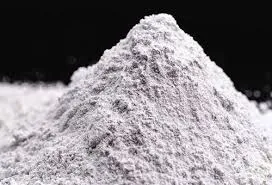
Abu . 10, 2024 19:50 Back to list
Synthesis and Applications of Hydroxyethyl Cellulose in Various Industrial Processes and Products
Synthesis of Hydroxyethyl Cellulose An Overview
Hydroxyethyl cellulose (HEC) is a non-ionic, water-soluble polymer derived from cellulose, which plays a critical role in numerous industrial applications due to its unique properties, including viscosity modification, thickening, and film-forming capabilities. The synthesis of HEC involves the etherification of cellulose with ethylene oxide, a reaction that introduces hydroxyethyl groups into the cellulose molecule. This article provides an overview of the synthesis process, including the raw materials, methods, and considerations involved.
Raw Materials
The primary raw material for the synthesis of hydroxyethyl cellulose is cellulose, which can be sourced from various plant materials like cotton, wood pulp, or other lignocellulosic sources. Ethylene oxide, a colorless, flammable gas, is the alkylating agent used in the etherification process. The reaction typically takes place in an alkaline environment, often facilitated by a catalyst, to promote the substitution of hydroxyl groups on the cellulose backbone by hydroxyethyl groups.
Synthesis Process
The synthesis of hydroxyethyl cellulose generally involves several key steps
2. Alkalization The purified cellulose is then treated with a strong base, such as sodium hydroxide (NaOH). This alkaline treatment converts some of the hydroxyl groups in cellulose into alkoxide ions, which are more reactive and can readily participate in the etherification reaction with ethylene oxide.
3. Etherification Once the cellulose is sufficiently alkalized, controlled amounts of ethylene oxide are introduced. This step typically occurs under controlled temperature and pressure conditions to minimize side reactions and ensure a uniform product. The etherification process can be conducted in batch or continuous systems, depending on the desired scale of production.
hydroxyethyl cellulose synthesis

4. Neutralization After the etherification reaction, the mixture is neutralized to remove excess alkali, often with dilute acids. This step is crucial for stopping the reaction and isolating the HEC product.
5. Purification and Drying The resulting hydroxyethyl cellulose is then purified, typically through washing with solvents to remove unreacted ethylene oxide and other by-products. Finally, the product is dried to obtain a powder form that is easy to handle and store.
Characterization and Properties
Characterizing hydroxyethyl cellulose involves determining its molecular weight, degree of substitution (DS), and rheological properties. The DS, which indicates the extent to which the hydroxyl groups of cellulose have been substituted by hydroxyethyl groups, significantly influences the solubility and viscosity of the HEC in aqueous solutions. The viscosity properties of HEC make it ideal for applications in industries such as pharmaceuticals, cosmetics, food, and construction.
Applications
Hydroxyethyl cellulose is widely utilized due to its versatile properties. In the construction industry, it acts as a thickening agent in cement and mortar formulations, improving workability and adhesion. In the pharmaceutical sector, HEC serves as a matrix for drug delivery systems and a binder for tablets. Furthermore, its film-forming ability makes it a popular ingredient in various cosmetic formulations, providing consistency and enhancing user experience.
Conclusion
The synthesis of hydroxyethyl cellulose is a vital process with broad applications across multiple industries. As demand for sustainable and biocompatible materials continues to grow, innovative methods for synthesizing HEC may evolve, potentially leading to more efficient production processes and applications. Understanding the synthetic pathways and properties of HEC is essential for harnessing its full potential in future formulations and products.
-
Versatile Hpmc Uses in Different Industries
NewsJun.19,2025
-
Redispersible Powder's Role in Enhancing Durability of Construction Products
NewsJun.19,2025
-
Hydroxyethyl Cellulose Applications Driving Green Industrial Processes
NewsJun.19,2025
-
Exploring Different Redispersible Polymer Powder
NewsJun.19,2025
-
Choosing the Right Mortar Bonding Agent
NewsJun.19,2025
-
Applications and Significance of China Hpmc in Modern Industries
NewsJun.19,2025







